Menu
Physics Lesson 2.1.3 - Components of a vector
Please provide a rating, it takes seconds and helps us to keep this resource free for all to use
Welcome to our Physics lesson on Components of a vector, this is the third lesson of our suite of physics lessons covering the topic of Vectors and Scalars, you can find links to the other lessons within this tutorial and access additional physics learning resources below this lesson.
Components of a Vector
It is not always the case that the direction of a vector coincides with one of the main directions we use as basic ones (up, down, left, right, or North, South, West, East). Vectors can also lie in such directions that are combinations of these four basic ones such as the vector shown in the figure below.
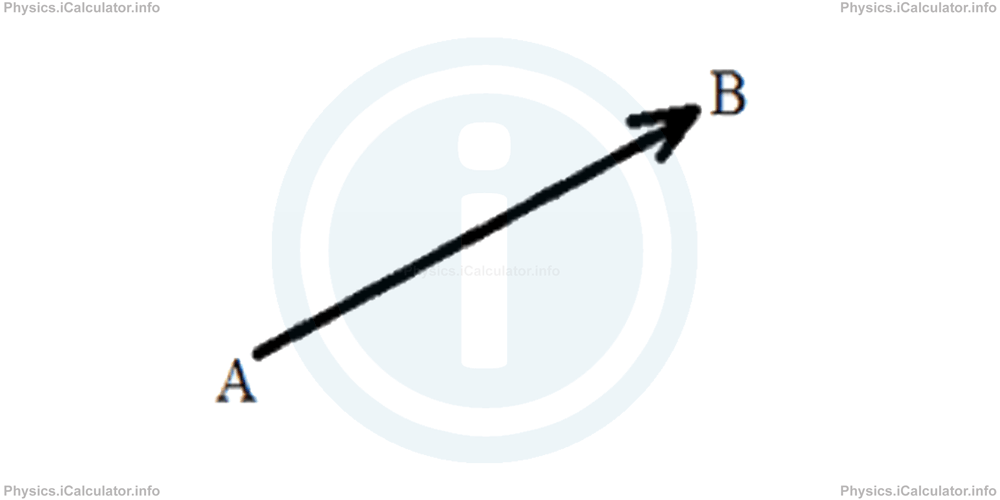
The direction of the vector AB⃗ is neither due East, nor due North but it is a combination of these two basic directions. Therefore, we can provide info about the horizontal and vertical shift of the point B in relation to the point A if the vector AB⃗ is not visually shown. In this way, you will enable the listener drawing the vector if he wants to. For example, if you say: "the point B is 4 units on the right and 3 units above the point A", your partner will easily draw the vector AB⃗ as shown below.
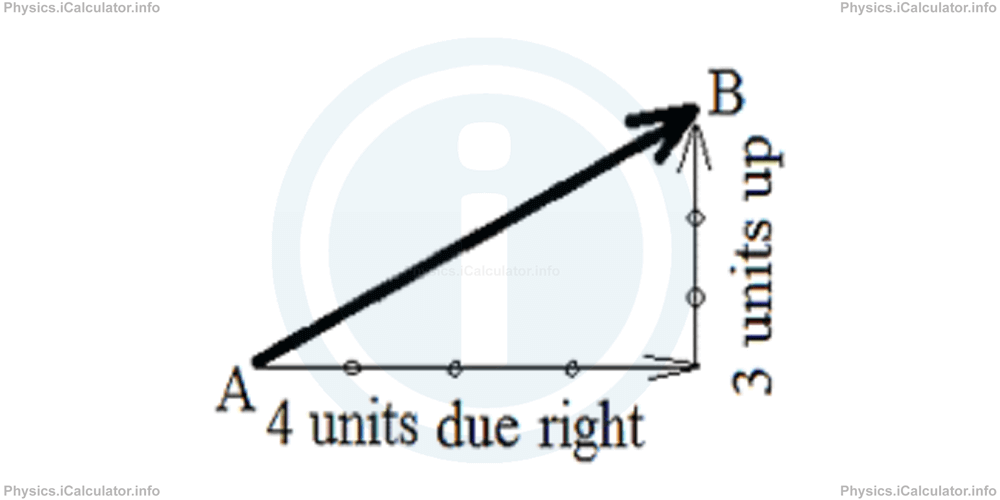
In this way, the vector AB⃗ splits into two components: the horizontal (x - component) and the vertical (y - component). Look at the figure.
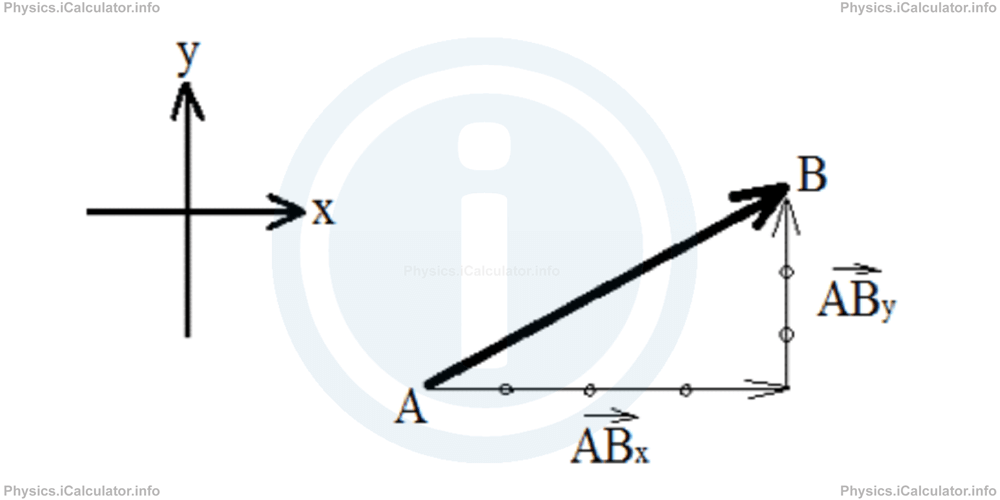
Magnitude of a vector. How to find the magnitude of a vector quantity when the components are given?
It is not easy to find the length (magnitude) of the vector AB⃗ when it is does not lie according one of the main directions, especially when you don't have any measuring tool but the only info you have are the horizontal and vertical units.
From the figure above, it is obvious that when splitting a vector into components, a right triangle is obtained. These components, namely ABx⃗ and ABy⃗ are those which form the right angle (legs) and the vector AB⃗ itself is the hypotenuse of the right triangle. From the Pythagorean Theorem, we know that
Therefore, the magnitude (size) of the vector AB⃗ is
(It is not necessary to write the vector symbol (→) above the components. Also, the symbol | | stands for the magnitude of the vector. It mathematically represents the absolute value of the quantity it contains. This is because the vector can lie to the negative direction but its magnitude is always positive as it represents the vector's length.)
Let's explain this point through an example.
Example
The horizontal and vertical components of a force are Fx = 120 N and Fy = 160 N respectively. What is the magnitude of the force F?
Solution
In fact, the components of a vector (in the specific case, we have a Force vector) have their starting point at the starting point of the original vector itself. However, for practical purpose, we can shift the vertical component Fy in a parallel way in order to close the triangle.
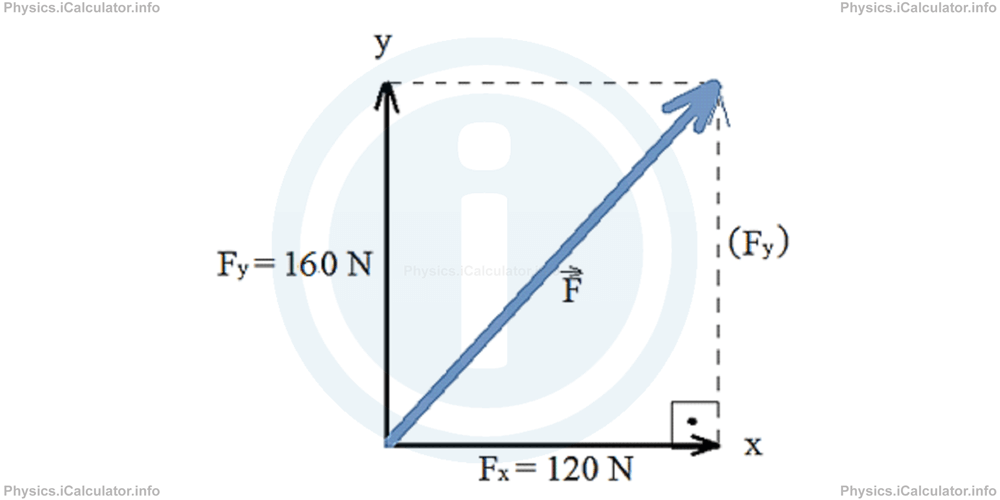
From the Pythagorean Theorem we have
|F⃗|2 = 1202 + 1602
= 14400 + 25600
= 40000
Therefore, the magnitude of the force F⃗ is
= 200N
How to find the angle formed by a vector with a certain direction?
From Trigonometry, we know that in a right triangle with legs a and b respectively and hypotenuse c as in the figure below, we have
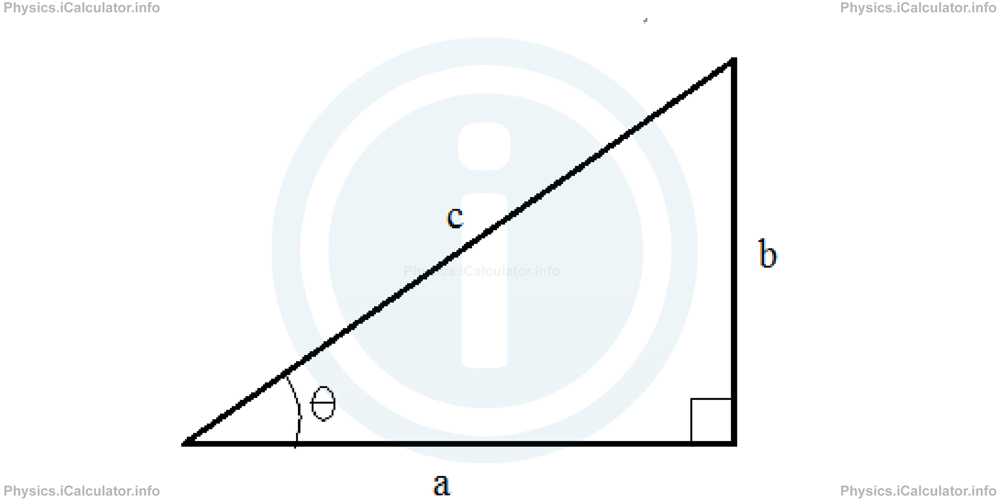
where Θ is the angle formed by the adjacent side and hypotenuse. These rules can also apply in vectors. They help us find the direction of a vector quantity. We simply replace a with vx, b with vy and c with the vector v, whatever it may represent.
Example 2
An airplane moves 44 km due North and then 76 km due East. Calculate:
- The total displacement of the airplane
- The angle formed by its displacement vector to the West - East direction.
(Displacement is a vector quantity)
Solution 2
The airplane's flight is graphically described in the figure below.
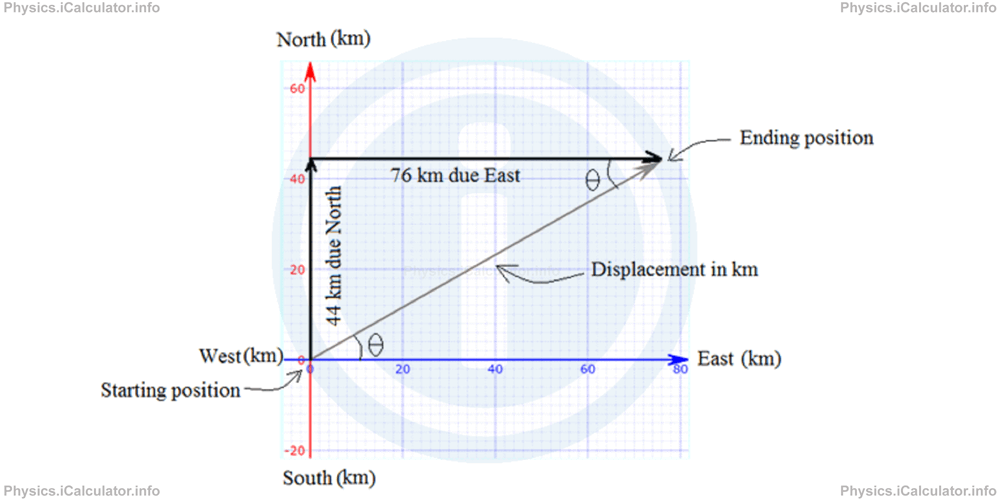
It is obvious the angles Θ are both equal as they are alternate interior angles. Therefore, we can limit our study by considering only the right triangle.
The two given values (44 km and 76 km) are the components of the displacement vector as they are perpendicular to each other and furthermore, they lie according the two basic directions. Thus, we have
(Despite the displacement due North has occurred first, we can switch the position of the addends due to the commutative property of addition)
Substituting the values, we obtain
= (1936 + 5776) km2
= 7712 km2
Here km2 does not stand for any surface area but only because we raised the displacements at power two).
Therefore, the total displacement will be
= 87.8 km
This value represents the shortest path from the initial to the final position of the airplane, as shown by the grey vector
We can use the trigonometric equations to find the required direction. The direction is considered as known if we find the angle Θ formed by the displacement vector to the West-East direction (here it is similar to the x-axis). Thus, when considering the triangle formed in the graph, we obtain
= Displacement due North/Displacement due East
= 44km/76 km= 11/19
Therefore, the angle Θ is
Hence, the airplane is 87.8 km away from the starting position and its displacement vector forms an angle of 30.07° to the West-East direction.
This information is particularly useful when the pilot provides his location during the communication with the air-traffic control centre during the flight.
More Vectors and Scalars Lessons and Learning Resources
Whats next?
Enjoy the "Components of a vector" physics lesson? People who liked the "Vectors and Scalars lesson found the following resources useful:
- Components Feedback. Helps other - Leave a rating for this components (see below)
- Vectors and Scalars Physics tutorial: Vectors and Scalars. Read the Vectors and Scalars physics tutorial and build your physics knowledge of Vectors and Scalars
- Vectors and Scalars Video tutorial: Vectors and Scalars. Watch or listen to the Vectors and Scalars video tutorial, a useful way to help you revise when travelling to and from school/college
- Vectors and Scalars Revision Notes: Vectors and Scalars. Print the notes so you can revise the key points covered in the physics tutorial for Vectors and Scalars
- Vectors and Scalars Practice Questions: Vectors and Scalars. Test and improve your knowledge of Vectors and Scalars with example questins and answers
- Check your calculations for Vectors and Scalars questions with our excellent Vectors and Scalars calculators which contain full equations and calculations clearly displayed line by line. See the Vectors and Scalars Calculators by iCalculator™ below.
- Continuing learning vectors and scalars - read our next physics tutorial: Addition and Subtraction of Vectors
Help others Learning Physics just like you
Please provide a rating, it takes seconds and helps us to keep this resource free for all to use
We hope you found this Physics lesson "Vectors and Scalars" useful. If you did it would be great if you could spare the time to rate this physics lesson (simply click on the number of stars that match your assessment of this physics learning aide) and/or share on social media, this helps us identify popular tutorials and calculators and expand our free learning resources to support our users around the world have free access to expand their knowledge of physics and other disciplines.